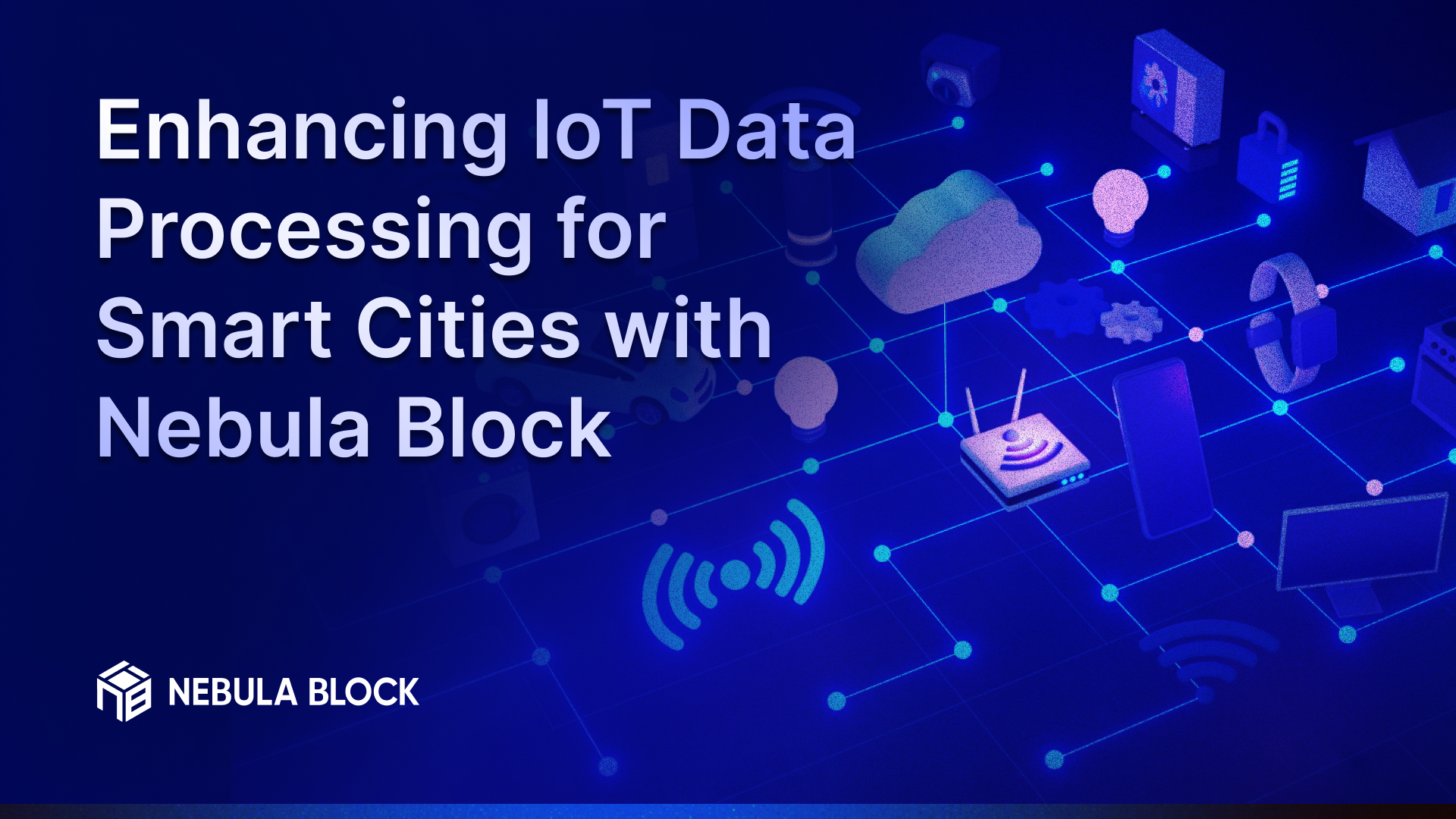Enhancing IoT Data Processing for Smart Cities with Nebula Block

Introduction
Smart cities rely on real-time IoT data to optimize everything from traffic lights to air quality. Yet the reality is, traditional cloud solutions struggle to keep up—high compute costs and latency issues limit scalability. For example, Montreal’s traffic optimization initiative faces these exact challenges.
Nebula Block solves this with a next-gen serverless platform powered by NVIDIA H100/H200 GPUs, offering 30% cost savings and sub-100ms latency. Let’s explore how Nebula Block empowers developers and civic tech teams to build smarter, faster urban solutions.
The Power of IoT Analytics with Nebula Block
As smart city adoption accelerates, over 1,000 cities worldwide have already launched digital transformation initiatives. With 70% of the global population expected to live in urban areas by 2050, the demand for efficient infrastructure and AI-powered solutions is greater than ever. IoT systems in smart cities generate massive sensor data streams—traffic flows, air quality, or energy usage—requiring low-latency processing for real-time insights.
Traditional cloud platforms struggle with high costs and static resource allocation, but Nebula Block’s serverless architecture, leveraging Kubernetes orchestration across 100+ data centers in 30+ regions, dynamically scales to meet demand. With H100 GPUs and vLLM integration, Nebula Block processes thousands of IoT data points per second with sub-100ms latency, ideal for applications like optimizing traffic signals or predicting urban congestion.
For example, a Montreal smart city project could use Nebula Block to analyze real-time traffic sensor data, reducing congestion by 20% through AI-driven signal adjustments. By integrating embedding models like UAE-Large-V1 or BGE-large-en-v1.5, cities can enhance predictive analytics for efficient urban mobility.

Querying IoT Insights with Nebula Block’s API
Nebula Block’s API-driven platform simplifies IoT data analysis. Below is a Python example for querying, using UAE-Large-V1 embedding model:
import requests
import os
url = "https://inference.nebulablock.com/v1/embeddings"
headers = {
"Content-Type": "application/json",
"Authorization": f"Bearer {os.environ.get('NEBULA_API_KEY')}"
}
data = {
"model": "WhereIsAI/UAE-Large-V1",
"input": [
"Analyze traffic sensor data to detect congestion patterns in Montreal.",
"Evaluate air quality sensor readings for urban pollution trends."
]
}
response = requests.post(url, headers=headers, json=data)
print(response.json())Expected Output: A list of dense vector embeddings (~1024 dimensions) that can be used for clustering, anomaly detection, or similarity search.
Benefits of Nebula Block for Smart Cities
- Cost Efficiency: 30% savings ($1.95/hour for A100 vs. $3.40/hour on opponents) make large-scale IoT analytics affordable.
- Scalability: Kubernetes orchestration across global data centers handles high-volume sensor data with ease.
- Low Latency: High GPUs and vLLM deliver sub-100ms inference for real-time insights.
- Integration: API-driven design simplifies deployment with tools like Hugging Face and SkyPilot.
Conclusion
Nebula Block transforms smart city IoT workflows with cost-efficient, scalable AI infrastructure. Whether optimizing transportation networks or processing environmental data, its flexible pricing model and API-driven integration ensure seamless deployment.
Sign up and explore now.
🔍 Learn more: Visit our blog and documents for more insights or schedule a demo to optimize your search solutions.
📬 Get in touch: Join our Discord community for help or Contact Us.
Stay Connected
💻 Website: nebulablock.com
📖 Docs: docs.nebulablock.com
🐦 Twitter: @nebulablockdata
🐙 GitHub: Nebula-Block-Data
🎮 Discord: Join our Discord
✍️ Blog: Read our Blog
📚 Medium: Follow on Medium
🔗 LinkedIn: Connect on LinkedIn
▶️ YouTube: Subscribe on YouTube